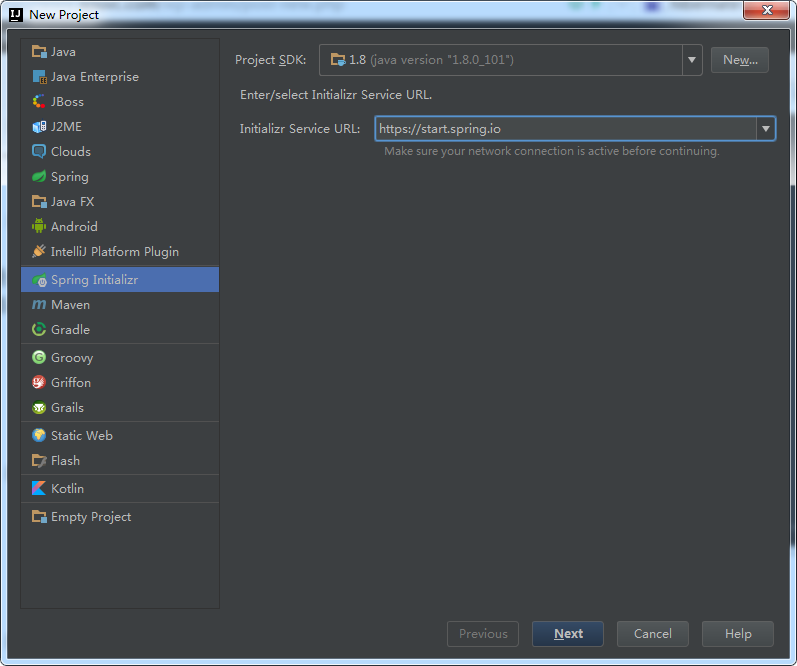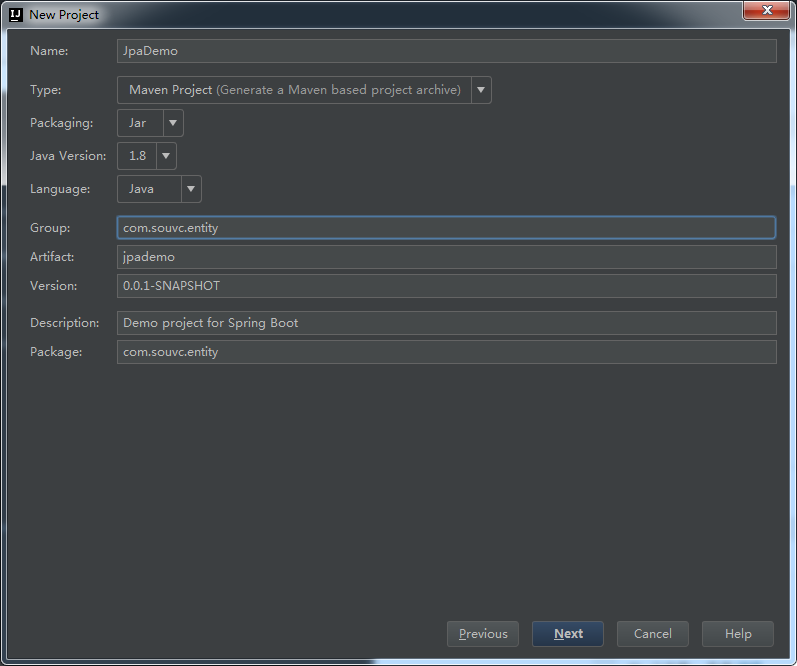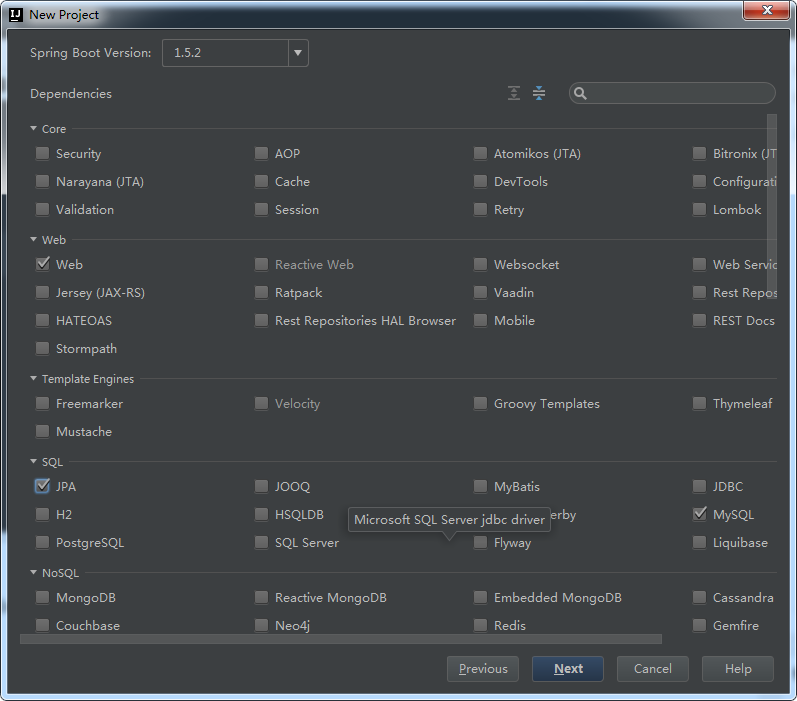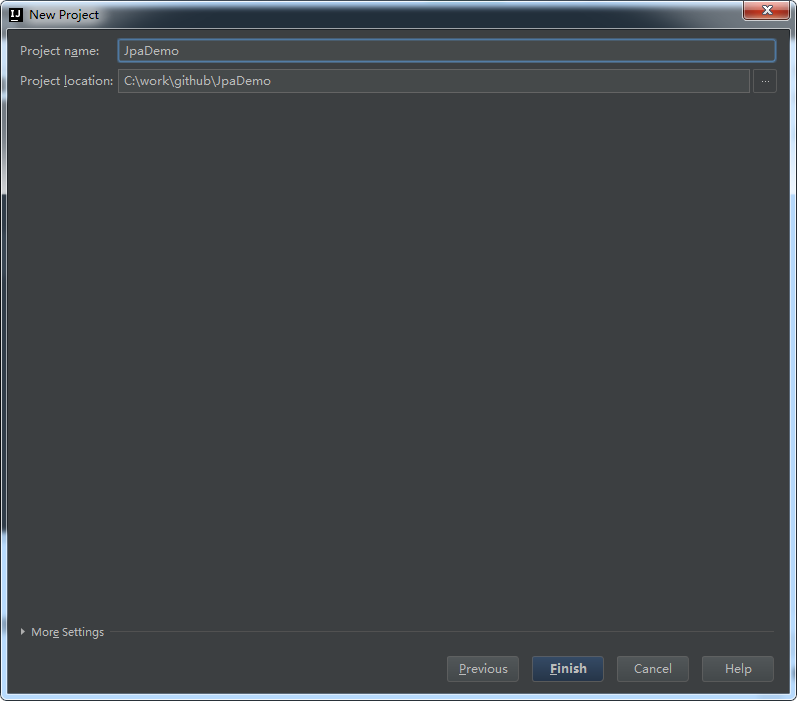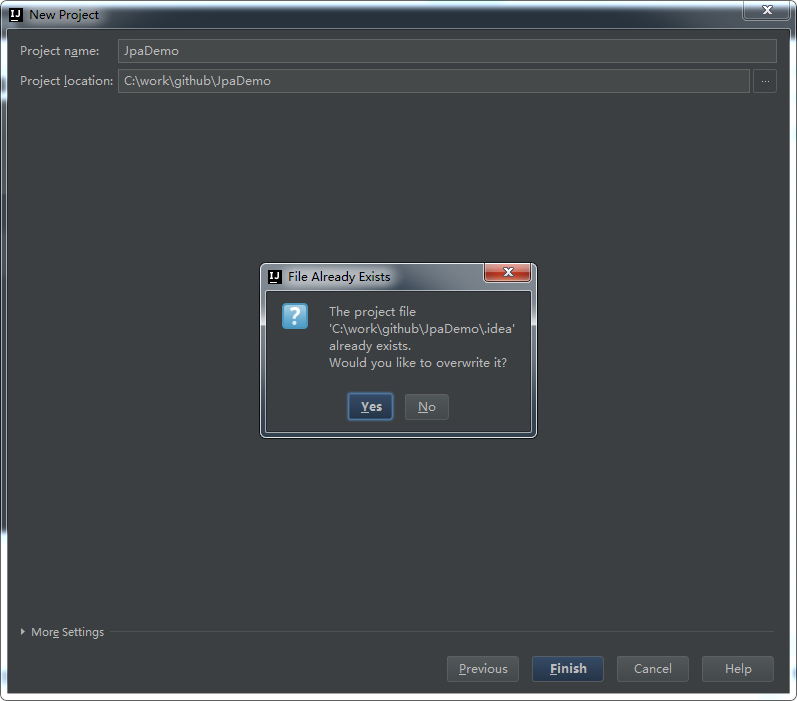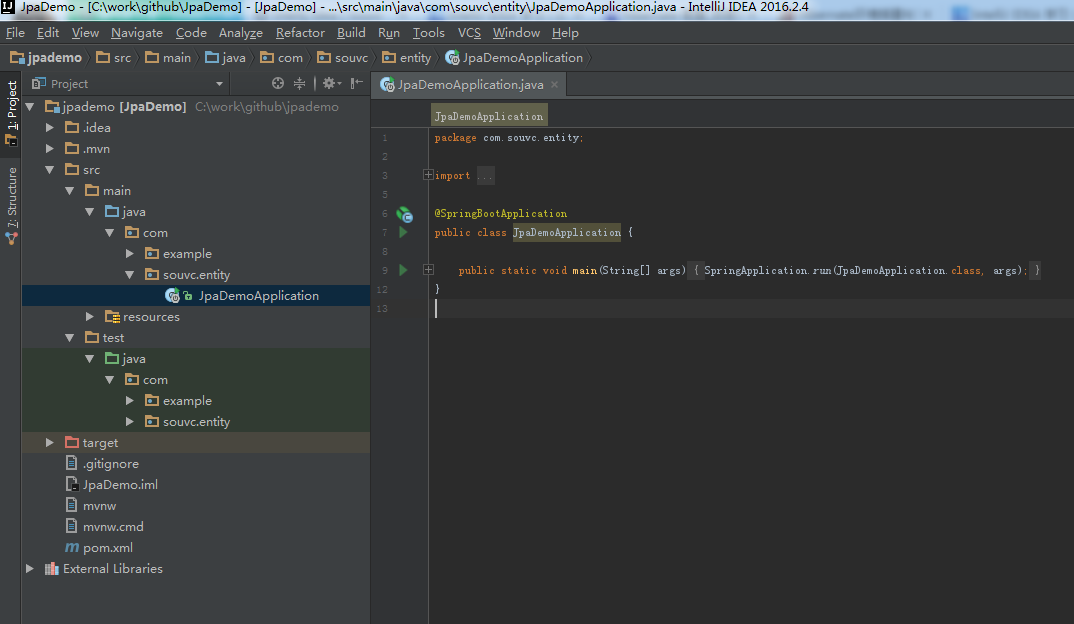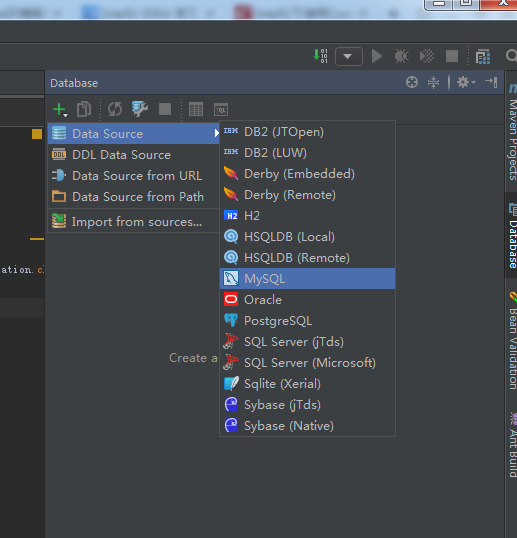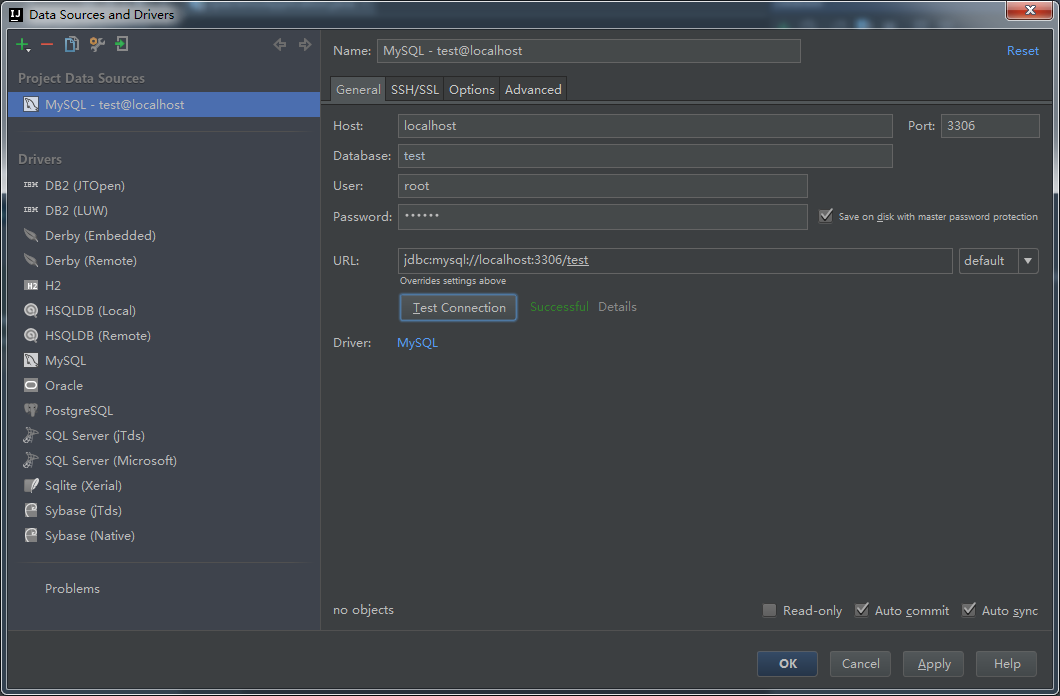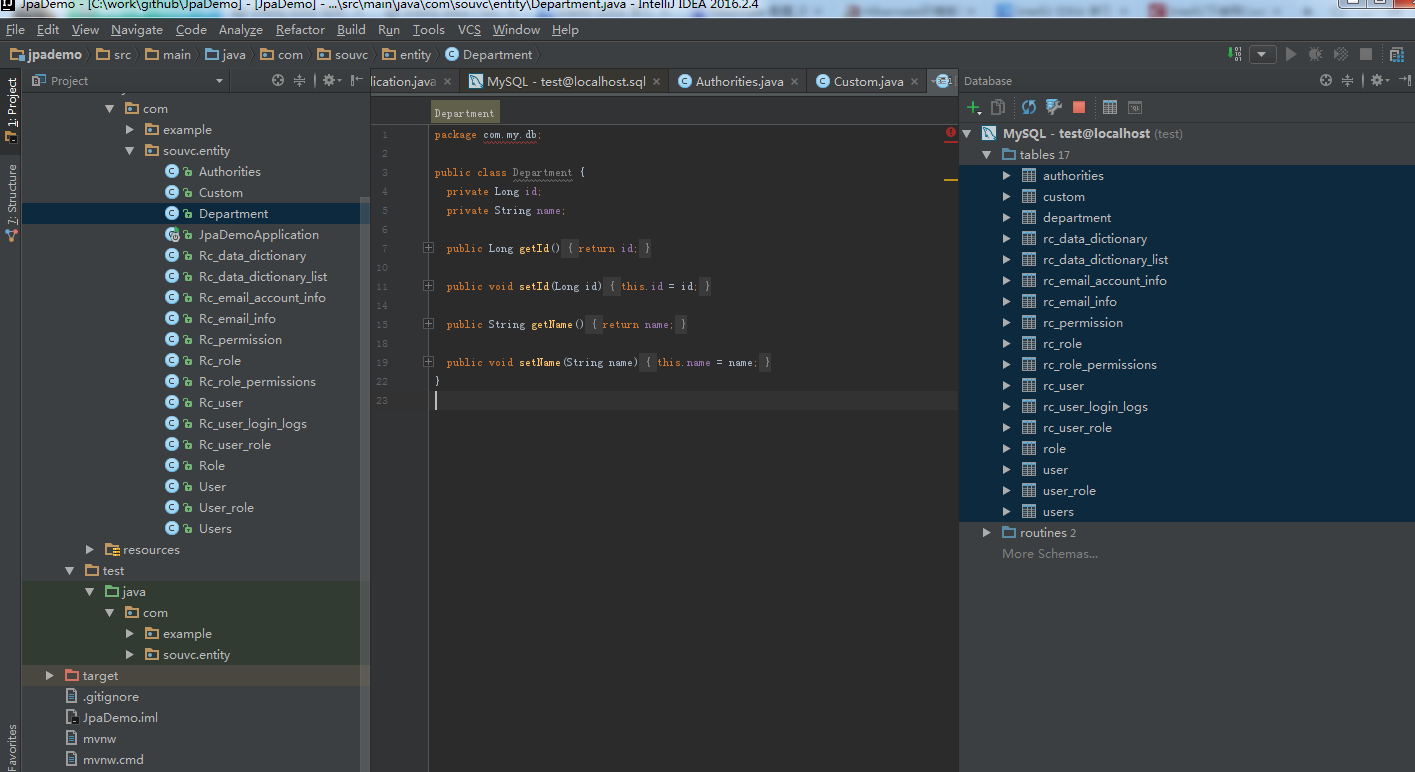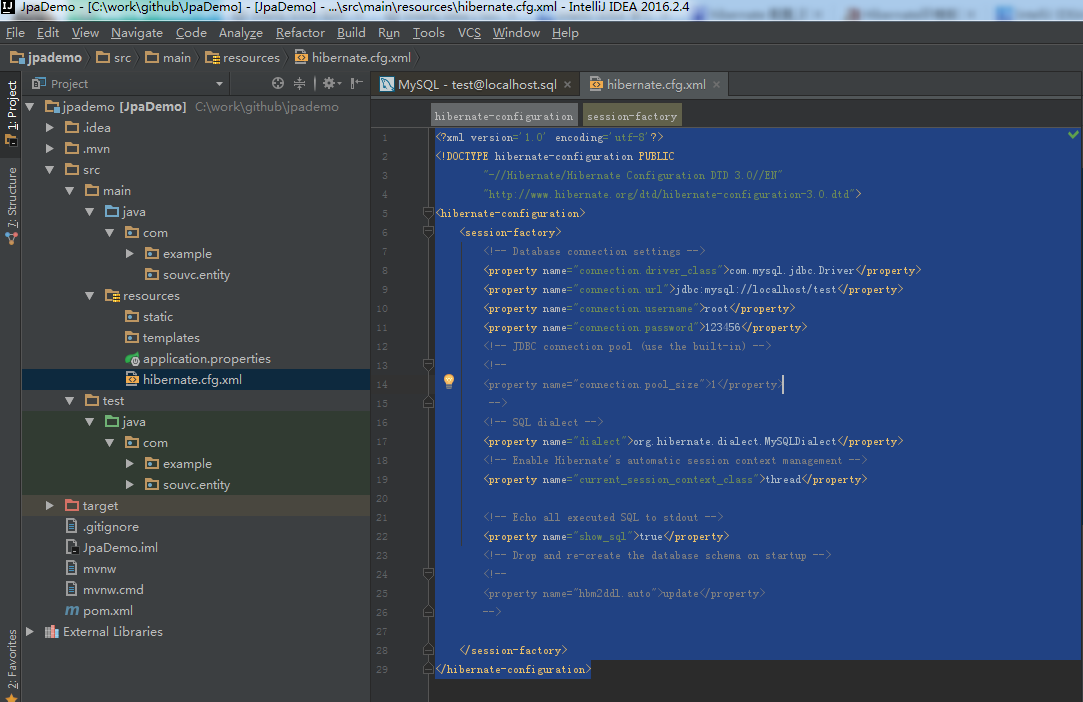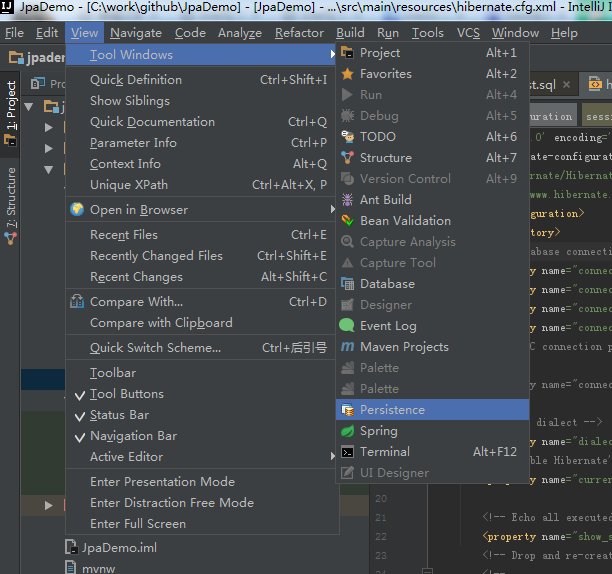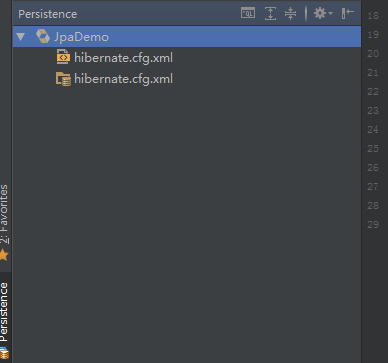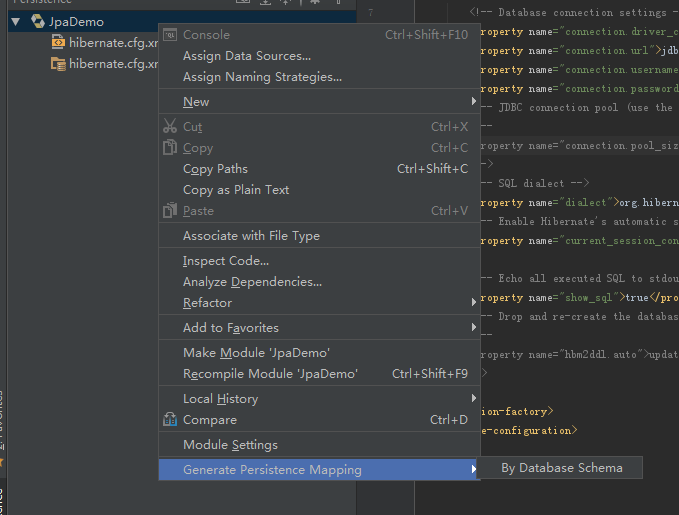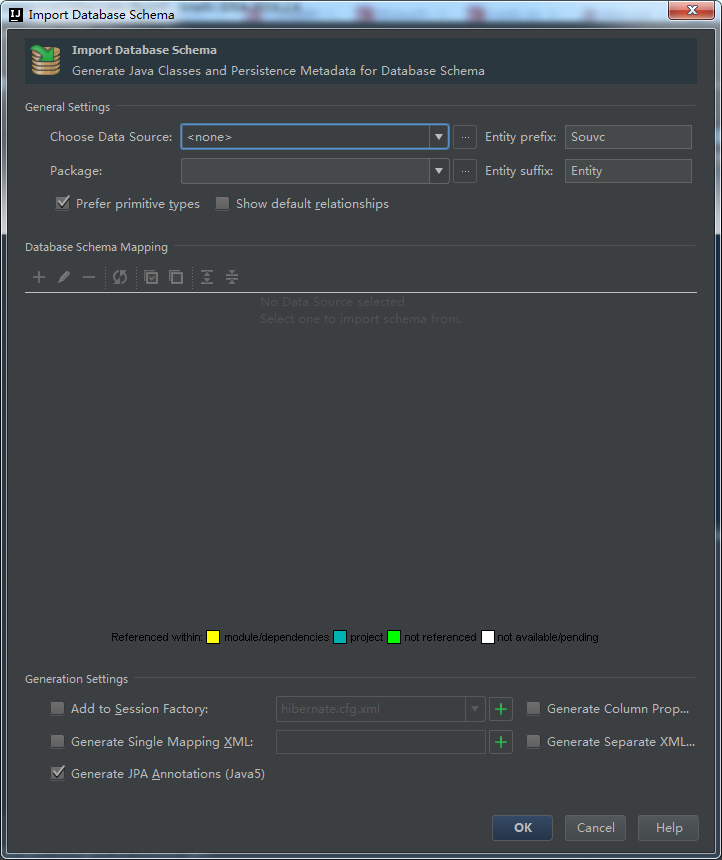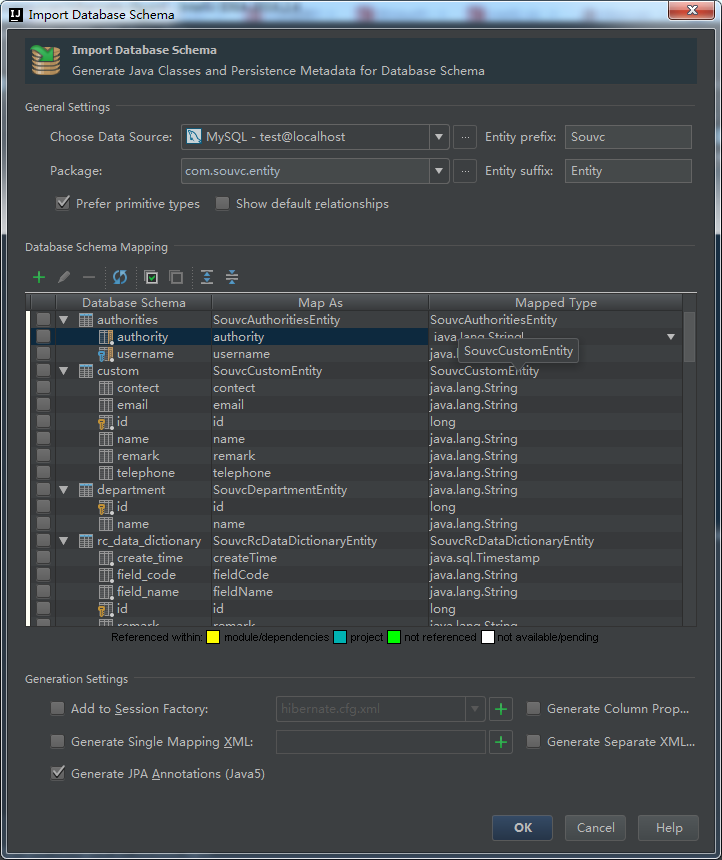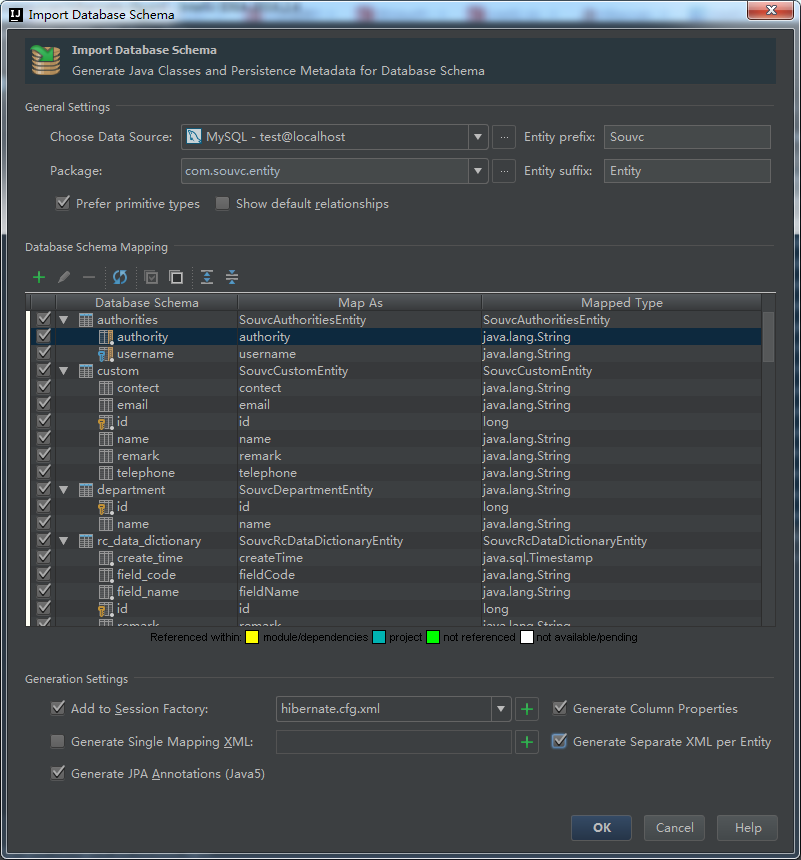Intellij IDEA 如何通过数据库表生成带注解的实体类图文详细教程
Intellij IDEA 如何通过数据库表生成带注解的实体类
第一步:新建一个Maven项目。项目的名称为JpaDemo。
我这里是通过idea插件对应的spring项目生成器https://start.spring.io,直接生成项目。如图:
下一步,修改成对应项目的基本信息。如图:
选择相应的依赖jar包。
选择项目的位置
完成创建
温馨提示,之前需要安装好maven。
第二步:配置数据库连接。
选择Mysql。
配置数据库基本信息
其实配置了这个数据库连接之后,是可以直接通过脚本进行导出数据库实体类了,但是这个导出的实体类比较简陋,需要进行修改比较多,或是需要自己进行修改生成脚本语句。如:
通过generate POJOs.clj即可导出实体类。
需要选一下实体类放置的地方。
效果如下:
但是以上的实体类没有带注解。那么我们通过项目中用到hibernate,或是jpa需要加注解怎么办,总不能一个个注解加上去吧。idea当然不会这么干啦。
使用IntelliJ IDEA快编码速度:我们程序员的工作不是写程序,而是写程序解决问题。那我们删了之前生成的实体类。我们重新生成一份带注解的实体类。
第三步:配置hibernate文件。
如果没有配置该配置文件,idea则没有显示出生成实体类的工具选项。
配置一下hibernate配置文件。
在资源文件下新建一个hibernate.cfg.xml配置文件。并输入以下内容。
1 2 3 4 5 6 7 8 9 10 11 12 13 14 15 16 17 18 19 20 21 22 23 24 25 26 27 28 29 | <?xml version='1.0' encoding='utf-8'?> <!DOCTYPE hibernate-configuration PUBLIC "-//Hibernate/Hibernate Configuration DTD 3.0//EN" "http://www.hibernate.org/dtd/hibernate-configuration-3.0.dtd"> <hibernate-configuration> <session-factory> <!-- Database connection settings --> <property name="connection.driver_class">com.mysql.jdbc.Driver</property> <property name="connection.url">jdbc:mysql://localhost/test</property> <property name="connection.username">root</property> <property name="connection.password">123456</property> <!-- JDBC connection pool (use the built-in) --> <!-- <property name="connection.pool_size">1</property> --> <!-- SQL dialect --> <property name="dialect">org.hibernate.dialect.MySQLDialect</property> <!-- Enable Hibernate's automatic session context management --> <property name="current_session_context_class">thread</property>
<!-- Echo all executed SQL to stdout --> <property name="show_sql">true</property> <!-- Drop and re-create the database schema on startup --> <!-- <property name="hbm2ddl.auto">update</property> -->
</session-factory> </hibernate-configuration> |
如图:
第四步:调出idea实体类生成工具。
调出生成实体类的配置工具
保存后。在主面板左侧有persistence,在hibernate图标上点击右键-Generate Persistence Mapping-By Database Scheme。
一开始是没有选中数据源的。
配置选项
(1)数据源选择
(2)生成实体类的位置
(3)实体类的前缀和后缀
(4)可以全选表,或是全不选表
(5)可以生成hibernate的实体类对应的xml文件
(6)展开表之后可以修改对应之间的类型。
第五步:选中需要执行的数据库表。
第六步:查看导出的效果。
生成过程
导出的结果
可以查看其中的一个实体类,看看效果。
1 2 3 4 5 6 7 8 9 10 11 12 13 14 15 16 17 18 19 20 21 22 23 24 25 26 27 28 29 30 31 32 33 34 35 36 37 38 39 40 41 42 43 44 45 46 47 48 49 50 51 52 53 54 55 56 57 |
|
hibernate主配置文件
1 2 3 4 5 6 7 8 9 10 11 12 13 14 15 16 17 18 19 20 21 22 23 24 25 26 27 28 29 30 31 32 33 34 35 36 37 38 39 40 41 42 43 44 45 46 47 48 49 50 51 52 53 54 55 56 57 58 59 60 61 | <?xml version='1.0' encoding='utf-8'?> <!DOCTYPE hibernate-configuration PUBLIC "-//Hibernate/Hibernate Configuration DTD 3.0//EN" "http://www.hibernate.org/dtd/hibernate-configuration-3.0.dtd"> <hibernate-configuration> <session-factory> <!-- Database connection settings --> <property name="connection.driver_class">com.mysql.jdbc.Driver</property> <property name="connection.url">jdbc:mysql://localhost:3306/test</property> <!-- JDBC connection pool (use the built-in) --> <!-- <property name="connection.pool_size">1</property> --> <!-- SQL dialect --> <property name="dialect">org.hibernate.dialect.MySQLDialect</property> <!-- Enable Hibernate's automatic session context management --> <property name="current_session_context_class">thread</property>
<!-- Echo all executed SQL to stdout --> <property name="show_sql">true</property> <mapping class="com.souvc.entity.SouvcAuthoritiesEntity"/> <mapping resource="com/souvc/entity/SouvcAuthoritiesEntity.hbm.xml"/> <mapping resource="com/souvc/entity/SouvcCustomEntity.hbm.xml"/> <mapping class="com.souvc.entity.SouvcCustomEntity"/> <mapping class="java.lang.String"/> <mapping resource="java/lang/java.lang.String.hbm.xml"/> <mapping class="com.souvc.entity.SouvcRcDataDictionaryEntity"/> <mapping resource="com/souvc/entity/SouvcRcDataDictionaryEntity.hbm.xml"/> <mapping class="com.souvc.entity.SouvcRcDataDictionaryListEntity"/> <mapping resource="com/souvc/entity/SouvcRcDataDictionaryListEntity.hbm.xml"/> <mapping class="com.souvc.entity.SouvcRcEmailAccountInfoEntity"/> <mapping resource="com/souvc/entity/SouvcRcEmailAccountInfoEntity.hbm.xml"/> <mapping class="com.souvc.entity.SouvcRcEmailInfoEntity"/> <mapping resource="com/souvc/entity/SouvcRcEmailInfoEntity.hbm.xml"/> <mapping class="com.souvc.entity.SouvcRcPermissionEntity"/> <mapping resource="com/souvc/entity/SouvcRcPermissionEntity.hbm.xml"/> <mapping resource="com/souvc/entity/SouvcRcRoleEntity.hbm.xml"/> <mapping class="com.souvc.entity.SouvcRcRoleEntity"/> <mapping class="com.souvc.entity.SouvcRcRolePermissionsEntity"/> <mapping resource="com/souvc/entity/SouvcRcRolePermissionsEntity.hbm.xml"/> <mapping class="com.souvc.entity.SouvcRcUserEntity"/> <mapping resource="com/souvc/entity/SouvcRcUserEntity.hbm.xml"/> <mapping class="com.souvc.entity.SouvcRcUserLoginLogsEntity"/> <mapping resource="com/souvc/entity/SouvcRcUserLoginLogsEntity.hbm.xml"/> <mapping class="com.souvc.entity.SouvcRcUserRoleEntity"/> <mapping resource="com/souvc/entity/SouvcRcUserRoleEntity.hbm.xml"/> <mapping class="com.souvc.entity.SouvcRoleEntity"/> <mapping resource="com/souvc/entity/SouvcRoleEntity.hbm.xml"/> <mapping class="com.souvc.entity.SouvcUserEntity"/> <mapping resource="com/souvc/entity/SouvcUserEntity.hbm.xml"/> <mapping class="com.souvc.entity.SouvcUserRoleEntity"/> <mapping resource="com/souvc/entity/SouvcUserRoleEntity.hbm.xml"/> <mapping class="com.souvc.entity.SouvcUsersEntity"/> <mapping resource="com/souvc/entity/SouvcUsersEntity.hbm.xml"/> <!-- Drop and re-create the database schema on startup --> <!-- <property name="hbm2ddl.auto">update</property> -->
</session-factory> </hibernate-configuration> |
其他配置文件
1 2 3 4 5 6 7 8 9 10 11 12 13 14 15 |
|
第七步:修正。
如果还没有符合项目的要求,那么我们可以自己进行修改一下。
共同学习,写下你的评论
评论加载中...
作者其他优质文章


